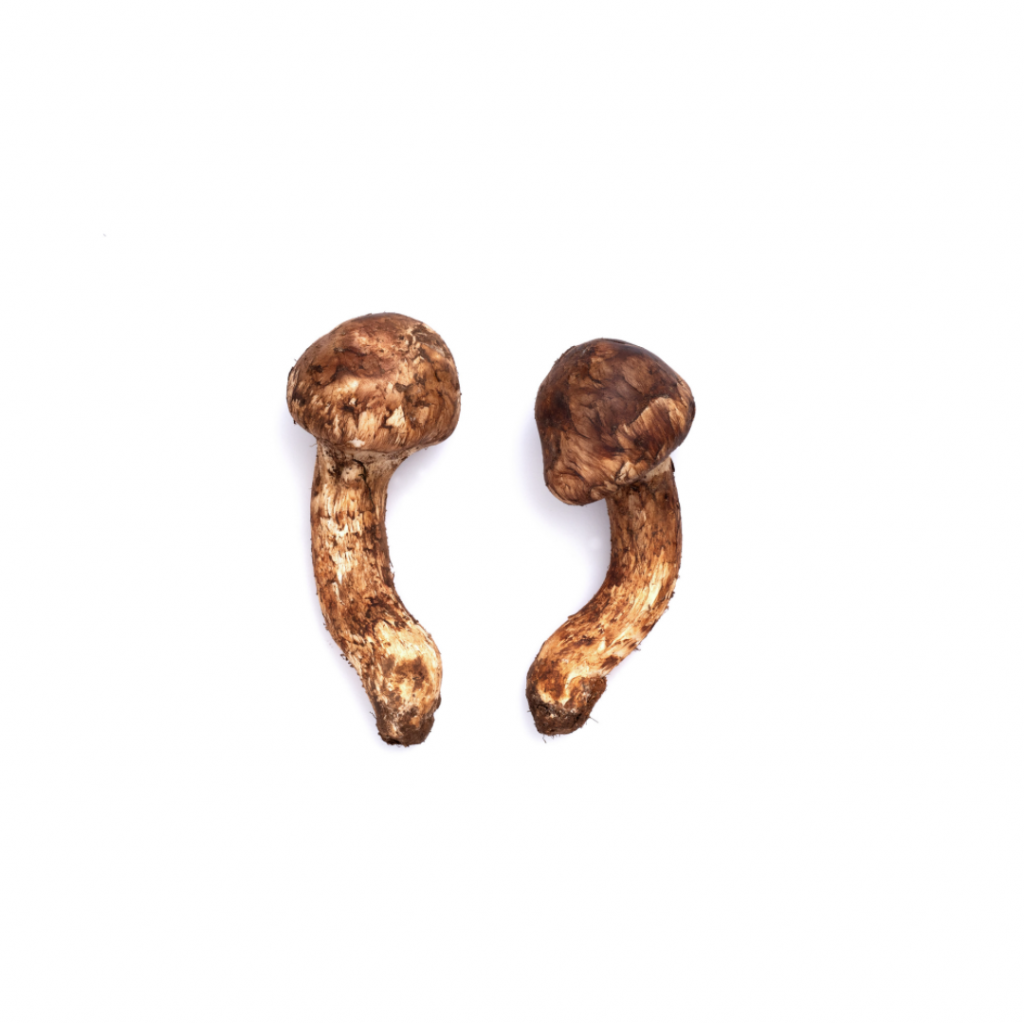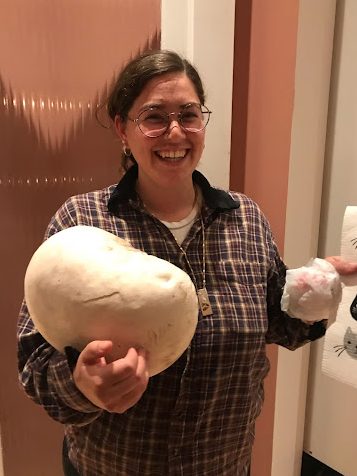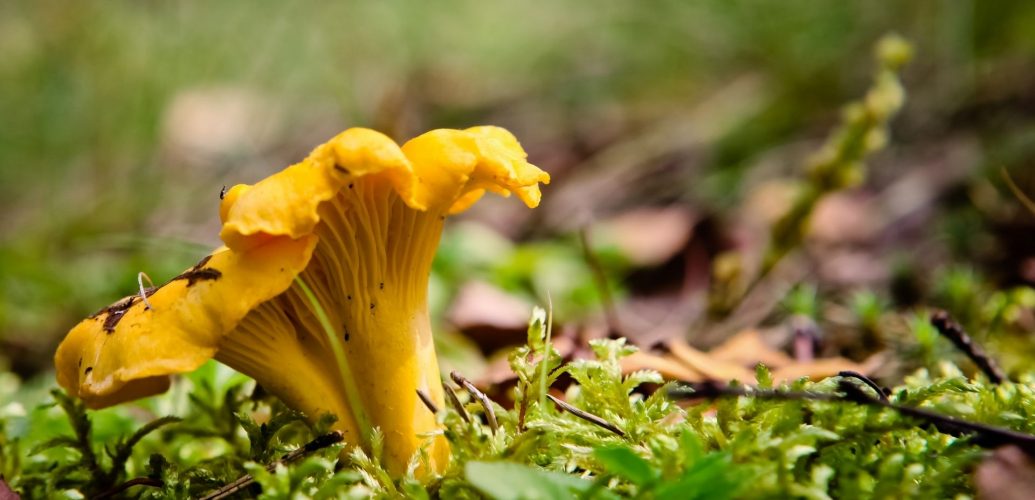I’m not sure exactly how I first became infatuated with fungi, but once you see them, you can’t unsee them. When I walk in the forest, my eyes are glued to the ground, scanning the paths and the forest floor for colours that stick out. Anything orange – which could be a chanterelle, catches my eye. Sometimes it’s a leaf, but other times I hit the jackpot and come across a patch. Once I got over the fear of eating them, by studying field guides, googling ‘false’ versions of the mushrooms I was looking for and only tasting a little bit before determining that I wasn’t sick, the edible mushroom universe opened up to me.
I remember one of the first times I went out foraging with my sister in the Eastern Townships of Quebec and finding heaps of orange chanterelles. We also found orange milk caps, which we realized were also edible and grew in abundance. We brought our booty back to the house, cooked them up in garlic and butter and presented them to the rest of our family with the disclaimer that we could all die. I recall even having a designated non-mushroom eater in case anything went wrong. I took my first bite and then immediately imagined myself to be hallucinating or tripping out. It was all in my head and the feeling passed. Everybody was fine and the mushrooms tasted great.
Some of my favourite memories foraging for mushrooms include going out with a group of friends on Quadra island in British Columbia to find mushrooms for our Thanksgiving feast. We found chanterelles and even some shaggy manes in the middle of a gravel road. We made shaggy mane gravy for poutine which was delicious. Shaggy manes, also called ink caps, can be tricky, however. Another time I found some and eagerly brought them home. I left them out on the table for a few hours, only to return to black ink all over with disintegrated mushrooms on top. It turns out this fungi releases its spores in liquid form and has a very, very short shelf life.

I have also been lucky enough to find the elusive Matsutake mushroom while working on a farm in the Kootenays of BC. At the time, I didn’t know of its worth and didn’t prepare it in the best way to really capture its essence, but I do recall it being tasty. While there, I also ate my first bolete mushrooms as well as the slimy bolete, which is exactly as it sounds – covered in a slimy mucus but nonetheless pretty tasty when stir fried.
I was on a camping trip in the Gaspé region of Quebec when we came across the fluorescent orange lobster mushroom, which is actually not a mushroom, but a parasitic fungus that grows on top of the common russula mushroom. We cooked it up over our cooking stove in butter with some chanterelles and true to its name, it has a lobster-like taste.
Most recently I found the giant puff ball – which is an entirely white, sponge-like mushroom that can grow to the size of a soccer ball. I had been trying to find one for years so eagerly cooked it up tempura style – breaded with breadcrumbs and fried in oil. This cooking method was the way to go, as I tried stir-frying it the next day to a less palatable end.The mushroom is very absorbent and it eagerly soaked up the salty sauce I had prepared like savoury marshmallows.

I love the slow hunt of the mushroom forage as it opens up my eyes and gives me a mission when walking in the forest. It also leads me to have some engaging culinary adventures. There is always so much to learn and infinite species to observe. I highly recommend focusing on fungi when in the forest!

